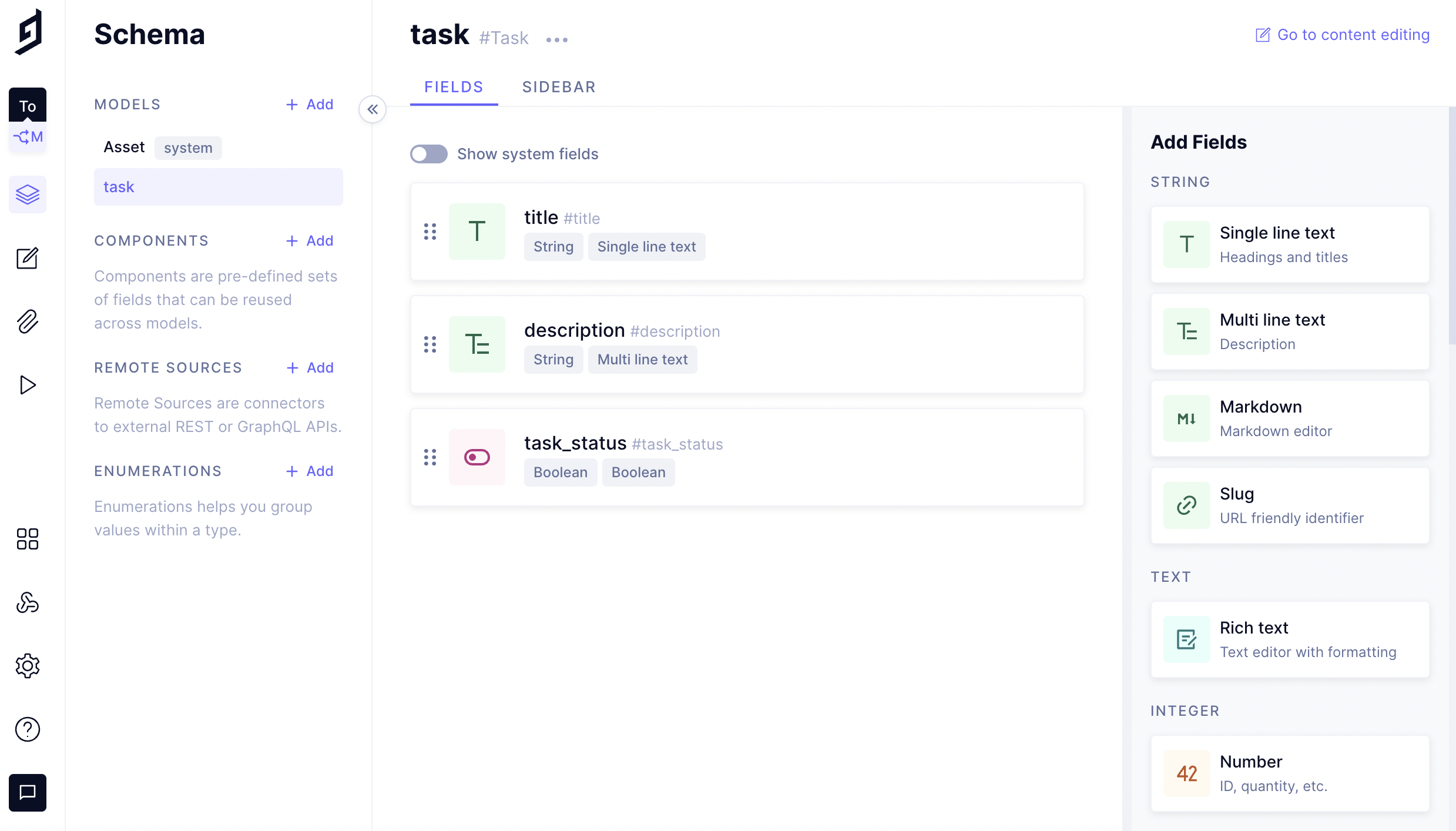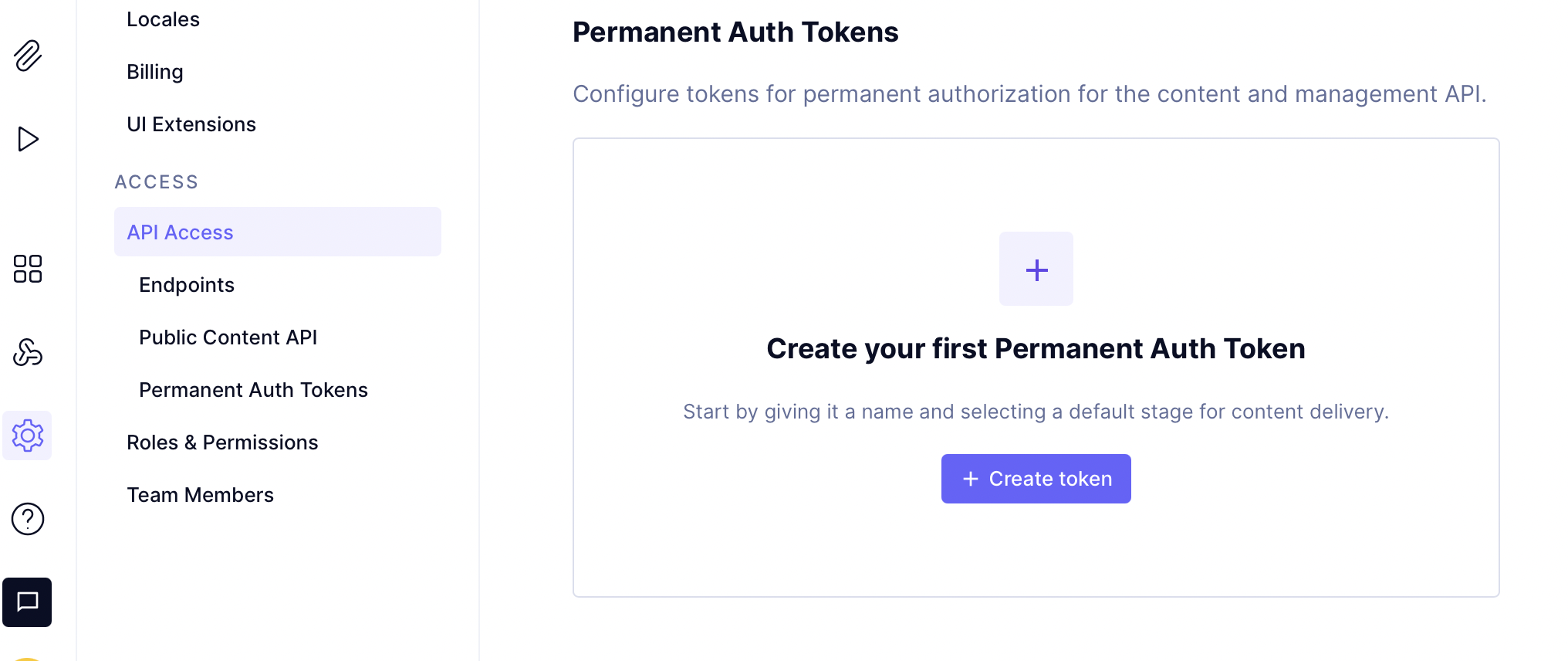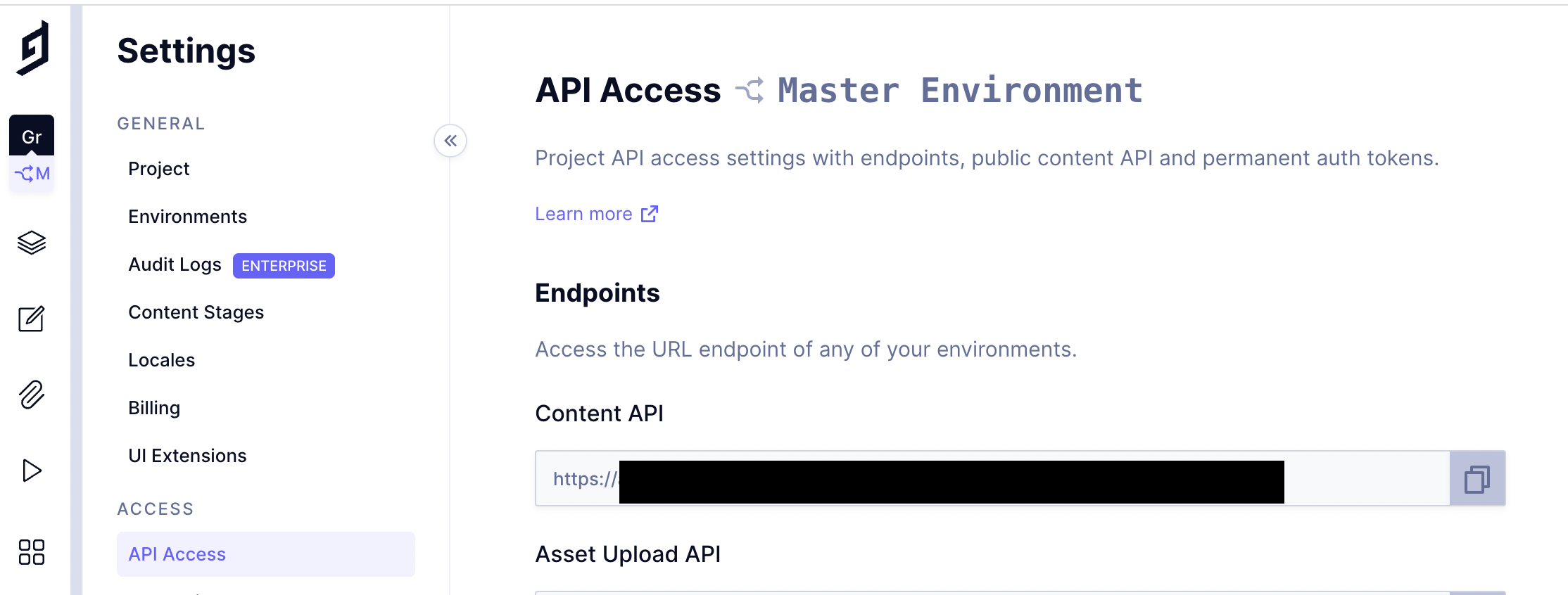この記事の概要
Vue3でTypeScriptを使いGraphQLを試してみた
- Vue3対応
- Vue Apollo v3(vue3に正式対応しているのはv4から 開発中)
- GraphQLを実行するまでのサンプル解説
GraphQLについて
APIのためのクエリー言語であり、既存のデータを使ってクエリーを実行するためのランタイム。
クライアントからサーバーのデータを取得する場合REST APIが主な手段だった
REST APIとの比較については以下記事をお勧めする
サンプル
目次
- GraphCMSで簡易サーバー作成
- Vue3にVue Apolloの環境を作成
- VueからGraphQL を実行(GET)
※ POST、PUT、DELETEの サンプルはGitへ
【1】GraphCMSで簡易サーバー作成
GraphCMSはGraphQLでレスポンスを返してくれるCMS
これを使用してDBサーバを作成する
- アカウントとプロジェクトの作成
- Modelの作成
- Fieldの作成
- データの追加
- Tokenの作成と権限の追加
- Content API URLの取得
[1-1] アカウントとプロジェクトの作成
- Create a new project 設定
- Template: Blank
- Project name: test-project
- Project description: なし
- Select region: Japan
- Plan: Free forever
- Members: -
- 自分以外にメンバーを追加したい場合のみ設定
[1-2] Modelの作成
- Schema > MODELS > Add
- Create Model 設定
- Display name: Task
- API ID: Task
- Plural API ID: Tasks
- Discription: なし
[1-3] Fieldの作成
- FieldのTypeを選択する
- MODELS > task > Add Fields > [Type選択]
- Create Field 設定1
- Type: Single line text
- Display name: title
- API ID title
- Create Field 設定2
- Type: Multi line text
- Display name: discription
- API ID discription
- Create Field 設定3
- Type: Boolean
- Display name: task_status
- API ID task_status
[1-4] データの追加
- Content > DEFAULT VIEWS > [Model Name(Workflow)] > Create Entry
[1-5] Tokenの作成と権限の追加
Project Settings > API Access ページでTokenを作成
Project Settings > API Access > Permanent Auth Tokens > Create token
作成したTokenに権限を設定する
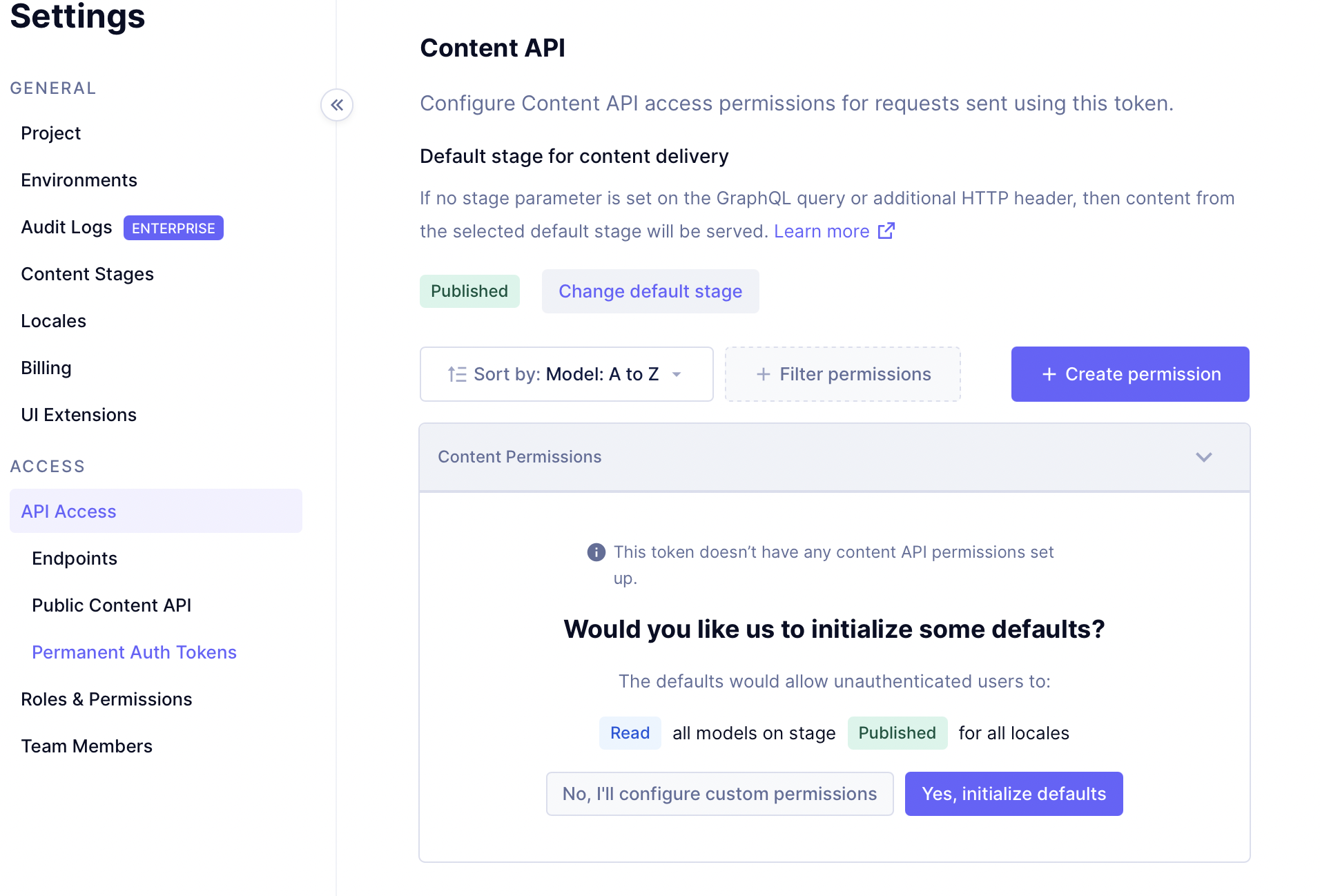
権限を与えるModelを作成したTaskにして追加
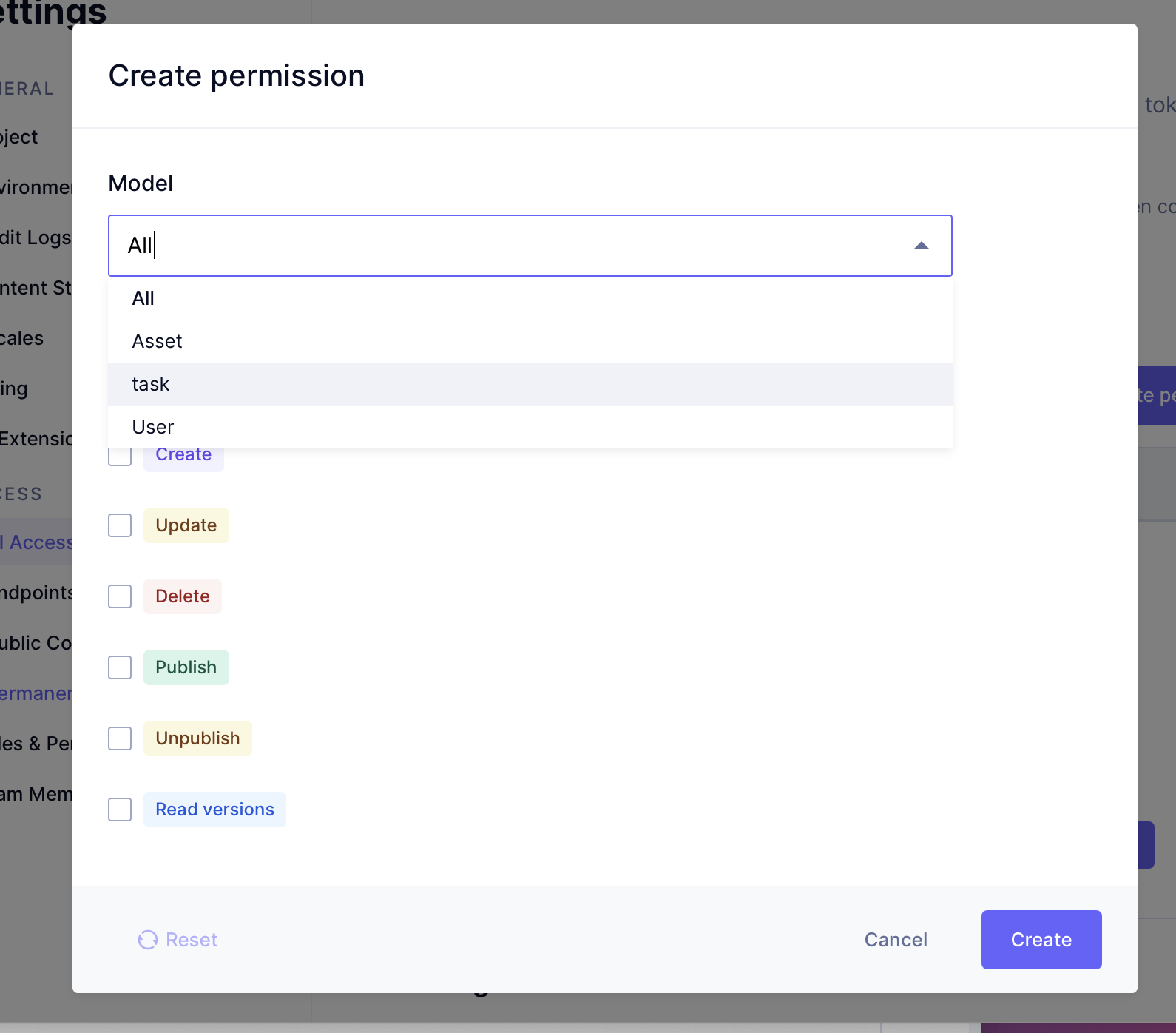
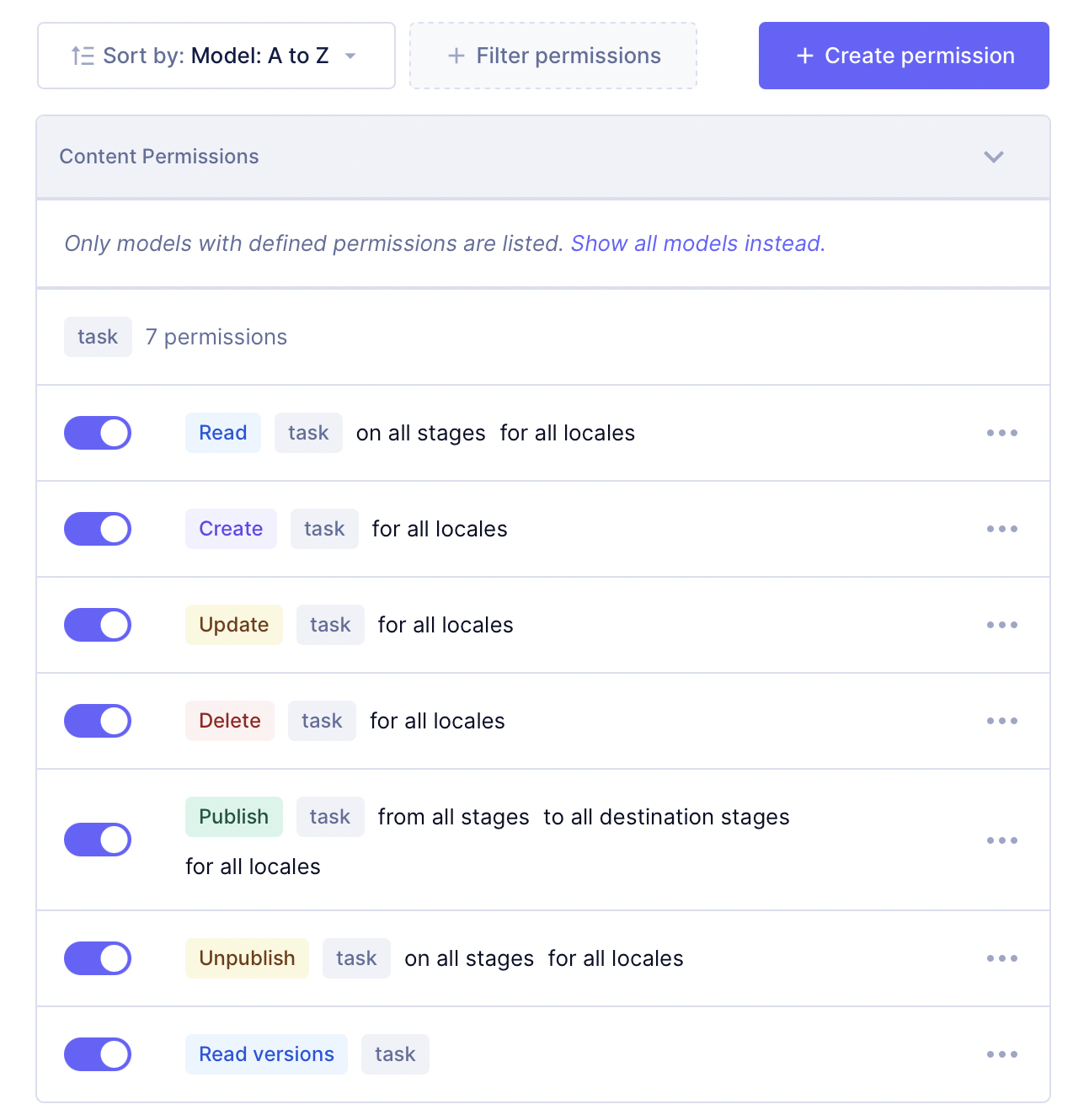
[1-6] Content API URLの取得
【2】Vue3 プロジェクトの作成と設定
- Vue3プロジェクトの作成
- vue-routerの設定
- vue-apolloの設定
- eslintの設定
[2-1] Vue3プロジェクトの作成
# yarn create vite <プロジェクト名> --template vue-ts
yarn create vite vite_ts --template vue-ts
cd <プロジェクト名>
yarn
yarn dev
作業しやすいようにポートとエイリアスを設定しておく
vite.config.ts
import { defineConfig } from "vite";
import vue from "@vitejs/plugin-vue";
export default defineConfig({
plugins: [vue()],
server: {
port: 8888,
},
resolve: {
alias: {
"~/": `${__dirname}/src/`,
},
},
});
tsconfig.jsonにもpathの設定を追加
{
"compilerOptions": {
"target": "ESNext",
"useDefineForClassFields": true,
"module": "ESNext",
"moduleResolution": "Node",
"strict": true,
"jsx": "preserve",
"sourceMap": true,
"resolveJsonModule": true,
"isolatedModules": true,
"esModuleInterop": true,
"lib": ["ESNext", "DOM"],
"skipLibCheck": true,
"baseUrl": "./src",
"paths": {
"~/*": [
"./*"
]
}
},
"include": ["src/**/*.ts", "src/**/*.d.ts", "src/**/*.tsx", "src/**/*.vue"],
"references": [{ "path": "./tsconfig.node.json" }]
}
[2-2] vue-routerの設定
yarn add vue-router@4
以下のファイルを作成
src/App.vue(router-view部分がpageごとに切り替わる)
<template>
<router-view />
</template>
<style>
table{
width: 100%;
border-spacing: 0;
}
table th{
border-bottom: solid 2px #ccc;
padding: 10px 0;
}
table td{
border-bottom: solid 1px #ddd;
text-align: center;
padding: 5px 0;
}
input[type="text"] {
width: 100%;
}
textarea {
width: 100%;
}
button {
display: inline-block;
width: 100%;
max-width: 100px;
margin: auto;
padding: 4px 8px;
border: none;
border-radius: 4px;
background-color: #269dff;
color: #fff;
font-size: 12px;
font-weight: bold;
appearance: none;
-webkit-appearance: none;
-moz-appearance: none;
cursor: pointer;
border: 2px solid transparent;
}
button:hover {
opacity: 0.5;
}
button.small {
padding: 2px 4px;
font-size: 10px;
}
button:disabled {
background-color: #bababa;
cursor: default;
opacity: 1;
}
button.outlined:not(:disabled) {
background-color: #fff;
border: 1px solid #fb4444;
color: #fb4444;
}
button.delete:not(:disabled) {
background-color: #fb4444;
}
button.complete:not(:disabled) {
background-color: #00b209;
}
</style>
src/router.ts([2-3] vue-apolloの設定時に main.tsで読み込む)
import { createRouter, createWebHistory } from "vue-router";
import Home from "./pages/index.vue";
import getPage from "./pages/get.vue";
const routes = [
{ path: "/", name: "home", component: Home },
{ path: "/get", name: "get", component: getPage },
];
const router = createRouter({
history: createWebHistory(),
routes,
});
export default router;
[2-3] vue-apolloの設定
- 追加 plugin
- "@vue/apollo-option": "^4.0.0-alpha.20"
- "vue-apollo": "^3.1.0"
- "graphql-tag": "^2.12.6"
- "vue-cli-plugin-apollo": "^0.22.2"
yarn add -D graphql-tag vue-cli-plugin-apollo vue-apollo @vue/apollo-option
.env.localに「TokensとContent API URLの取得」で控えた情報を設定
VITE_GRAPHQL_AUTH_TOKEN=[あなたのTOKEN]
VITE_GRAPHQL_HTTP=[あなたのAPI ENDPOINT]
- main.ts
- vue-apolloの設定コードを追加
- vue-routerを読み込み
import "./style.css";
import { ApolloClient, InMemoryCache, HttpLink } from "@apollo/client/core";
import { createApolloProvider } from "@vue/apollo-option";
import { createApp } from "vue";
import router from "./router";
import App from "./App.vue";
const AUTH_TOKEN = import.meta.env.VITE_GRAPHQL_AUTH_TOKEN || "";
const httpEndpoint =
import.meta.env.VITE_GRAPHQL_HTTP || "http://localhost:4000/graphql";
const httpLink = new HttpLink({
uri: httpEndpoint,
headers: {
"Content-Type": "application/json",
Authorization: `Bearer ${AUTH_TOKEN}`,
},
});
/**
* Create the Apollo client
*/
const cache = new InMemoryCache();
const apolloClient = new ApolloClient({
cache,
link: httpLink,
});
/**
* Create the Apollo provider
*/
const apolloProvider = createApolloProvider({
defaultClient: apolloClient,
});
/**
* Add the provider to your app
*/
const app = createApp(App);
app.use(router);
app.use(apolloProvider);
app.mount("#app");
[2-3] eslintの設定
- 追加 plugin
- "eslint": "^8.21.0"
- "eslint-plugin-vue": "^9.3.0"
- "@vue/eslint-config-typescript": "^11.0.0"
- "@typescript-eslint/eslint-plugin": "^5.32.0"
- "@typescript-eslint/parser": "^5.32.0"
yarn add -D eslint eslint-plugin-vue @vue/eslint-config-typescript @typescript-eslint/parser @typescript-eslint/eslint-plugin
eslintの設定ファイル(.eslintrc.yml)を追加
touch .eslintrc.yml
.eslintrc.yml
env:
browser: true
es2021: true
extends:
- 'plugin:vue/vue3-recommended'
- 'eslint:recommended'
- '@vue/typescript/recommended'
parser: 'vue-eslint-parser'
parserOptions:
parser: '@typescript-eslint/parser'
ecmaVersion: 12
plugins:
- vue
- '@typescript-eslint'
Vscodeの拡張機能でVeturを利用してる場合
vue3から利用できる<script setup lang="ts">にVeturは未対応(2022.08.07)
以下手順で拡張機能を変更する
【3】VueからGraphQLを実行(GET)
設定が終わったので実際に動かしてみる
- GraphQL文を書く(GET ワークフローの全ての情報を取得)
- Vue Apolloで実行する
[3-1] GraphQL文を書く(GET)
src/constants/task.ts
export const ALL_WORKFLOWS = gql`
query allWorkflows {
workflows(orderBy: id_ASC) {
id
title
description
createdAt
}
}
`;
titleとdescriptionは自分で設定した項目
idとcreatedAtはpost時に自動で追加される項目
query allWorkflows
「allWorkflows」は好きな名称でよい
このQL文はワークフローの全ての情報を取得するためのものなので「allWorkflows」とした
workflows(orderBy: id_ASC) {
「workflows」はModel名の複数形にすることで「複数データの取得」となる
「orderBy: 項目名_昇順・降順」でソート順を決められる
「id_ASC」はidの昇順、「createdAt_DESC」なら作成した日時順で降順となる
[3-2] Vue Apolloで実行する
apolloの設定はすでにしてあるので
Vueでアポロを使って先ほど作成したQL文章を渡して実行する
src/pages/get.vue
<template>
<div>
<table>
<tr>
<th width="200">
ID
</th>
<th width="200">
TITLE
</th>
<th width="300">
DESCRIPTION
</th>
<th width="100">
STATUS
</th>
</tr>
<tr
v-for="task in tasks"
:key="task.id"
>
<td>{{ task.id }}</td>
<td>{{ task.title }}</td>
<td>{{ task.description }}</td>
<td>{{ task.task_status }}</td>
</tr>
</table>
</div>
</template>
<script lang="ts">
import { defineComponent } from 'vue'
import {
ALL_TASKS,
} from '~/constants/task';
interface task {
id: string,
title: string
description: string
task_status: boolean
}
interface Data {
tasks: task[],
}
export default defineComponent({
name: 'TodoList',
data(): Data {
return {
tasks: [],
};
},
apollo: {
tasks: ALL_TASKS,
},
});
</script>
これを実行する
yarn dev
以下のように表示される。
データの取得が行えた。
以上
